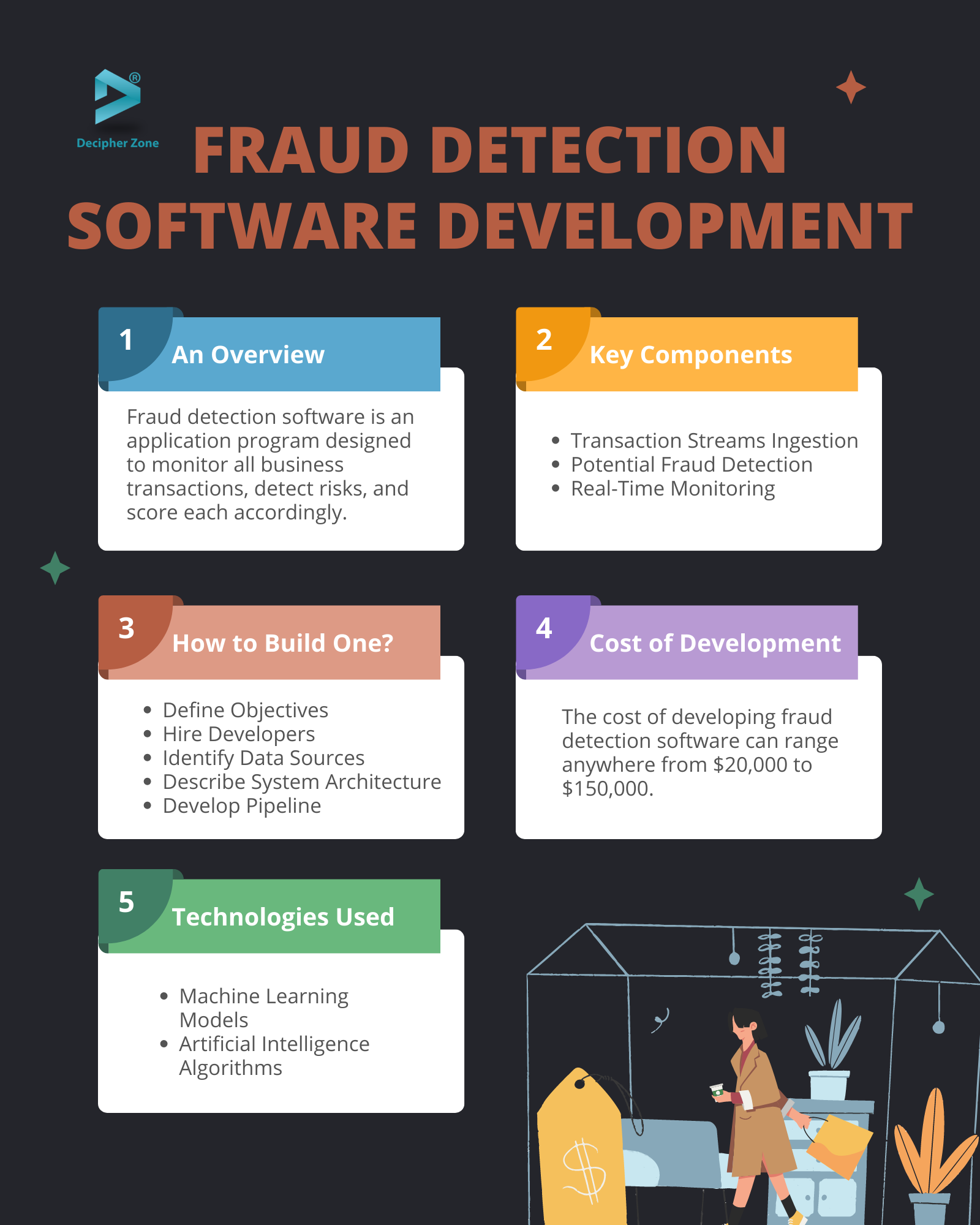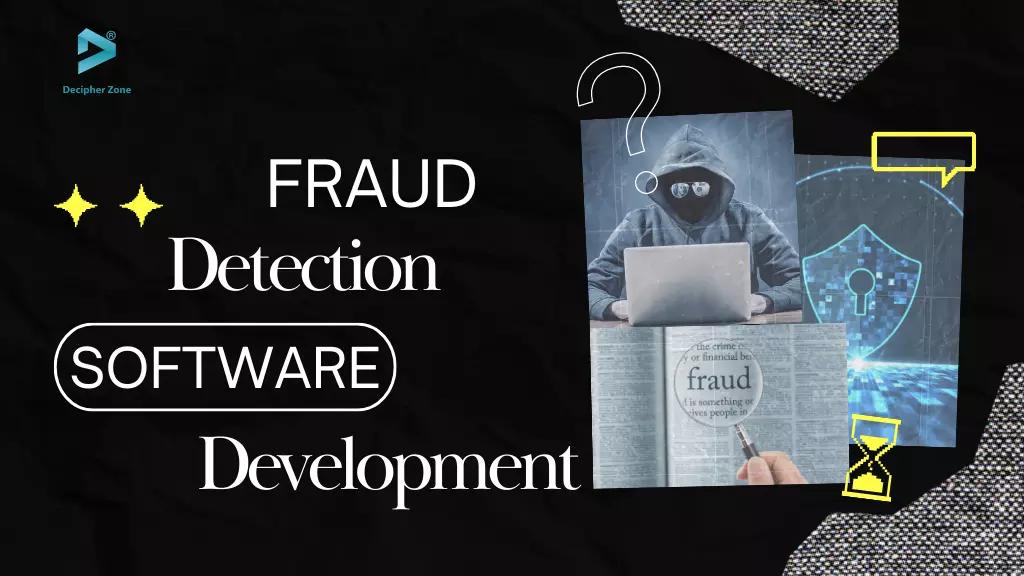Fraud Detection Software Development. As businesses and consumers switch to online services and transactions, the challenge of stopping fraudulent activities has come into view. In order to curb these fraudulent behaviors, organizations are witnessing an ever-increasing need to invest in a robust fraud detection solution that can offer real-time, actionable alerts.
And according to a report from Fortune Business Insights, the global market of fraud detection and prevention is expected to reach a whopping $66.6 billion at a CAGR of 19.1% by 2028.
So, in today’s blog, we will help you understand what fraud detection software entails, making it easier to develop one for your business.
Fraud Detection Software Development
Fraud detection defines the techniques used to prevent money or identity theft through deception. You can think of fraud detection as a security barrier used to protect a business or its customers from cyber fraud, such as stealing credit card information, accessing sensitive data, etc.
Read: Banking Software Development
And fraud detection software is an application program designed to monitor all business transactions, detect risks, and score each accordingly. It helps reduce financial losses a business undergoes due to malicious activities. Also, by providing real-time analysis, this software prevents fraud while maintaining transactional security.
What Should a Fraud Detection Software Consist?
Before learning how to build software solutions for detecting fraud, it is crucial to understand what components should be included in real-time, robust fraud detection software.
Here we have enlisted the significant elements to be integrated into the software:
Transaction Streams Ingestion
For detecting fraud in real-time, it is essential to have a system that can ingest a high volume of data like transaction amount, user information, location, IP address, payment methods, and other risk factors and process them as soon as they are generated.
Potential Fraud Analysis
Using artificial intelligence and machine learning algorithms on the fraud detection software can help analyze potential risk patterns based on historical data learning or pre-defined rules.
Real-Time Monitoring
Another important factor to add to the software is real-time monitoring. Identifying threats beforehand only does half the work, however, to act on the insights you need a system that monitors the analyzed results, raises alerts, and triggers responses to secure online transactions.
Read: Cybersecurity Trends
How to Build a Fraud Detection Software?
Now comes the part you were waiting for from the very beginning. In this section, we will learn the way to build a successful, robust, real-time fraud detection software for your organization. These steps involve:
-
The first step to building fraud detection software includes defining the goals by answering questions such as:
-
What are the fraud cases you want to detect?
-
What are the key measurements you want to focus on?
-
How many developers will be involved?
-
-
After defining the objectives, the next step is to identify data sources for the system. These data sources can be user profile, product usage, transactional data, and risk profile.
-
Once you are done with identifying data sources, it is time to consider some factors that will impact the architecture of the system. These factors are:
-
Fraud prevention operational flow (a way to handle and confirm suspicious events)
-
Detection frequency (a way to run data through scoring model)
-
Scoring accuracy (to access quality of the fraud scoring model)
-
-
What comes after defining the fraud detection system architecture is the pipeline development for data engineering, transforming, and modeling.
-
In data engineering data will be ingested, merged, aggregated, and set up from different sources.
-
Data transforming will improve the data quality and feed it to ML models.
-
And in the ML modeling pipeline, machine learning models will be created depending on the key metrics of the business.
-
Read: Integrated Security System

Also, to build and integrate fraud detection system architecture and pipelines, you will need to hire experienced developers with hand-on experience. To verify their legitimacy, you can go through their portfolio and profile for a run down on their previous work.
Read: IoT Security Threats and Solutions
This brings us to our next question…
Fraud Detection Software Development Cost
The cost of developing fraud detection software can range anywhere from $20,000 to $150,000. This variation in the cost is due to the difference in the software size, complexity, tech stack, integrated tools, hourly rate, development time, development team experience, and so much more.
The only way to know the exact cost of development is through consulting with industry experts who will gather all the information about your needs and provide you with a quote.
Read: What is Cybersecurity
Conclusion
That was all about fraud detection software development. And it goes without saying that these software solutions have become more than necessary for every business trying to minimize losses caused by fraudulent activities. Also, adding advanced technologies like machine learning and artificial intelligence can be impactful and efficient to prevent fraud and provide high security.
Read: Best Practices for API Security
And if you are looking for outsourcing a development team that can build fraud detection software according to your business needs while staying within your budget, then you are at the right place. All you have to do is, contact our experts, share your requirements, get a quote, interview developers, and hire them to accomplish your goals.
So what are you waiting for? To have your fraud detection software developed, get in touch with us now!
FAQs: Fraud Detection Software Development
What are the technologies used to detect fraud?
Machine learning (ML) models and artificial intelligence (AI) algorithms are the major technologies used in fraud detection software to identify potential fraud.
Is fraud detection automated?
Yes, fraud detection tools and software are automated to carry out fraud detection around the clock, send alerts to users, and trigger appropriate responses to prevent fraudulent activities.
What is fraud detection software?
Fraud detection software is an application program designed to monitor all business transactions, detect risks, and score each accordingly. It helps reduce financial losses a business undergoes due to malicious activities.

